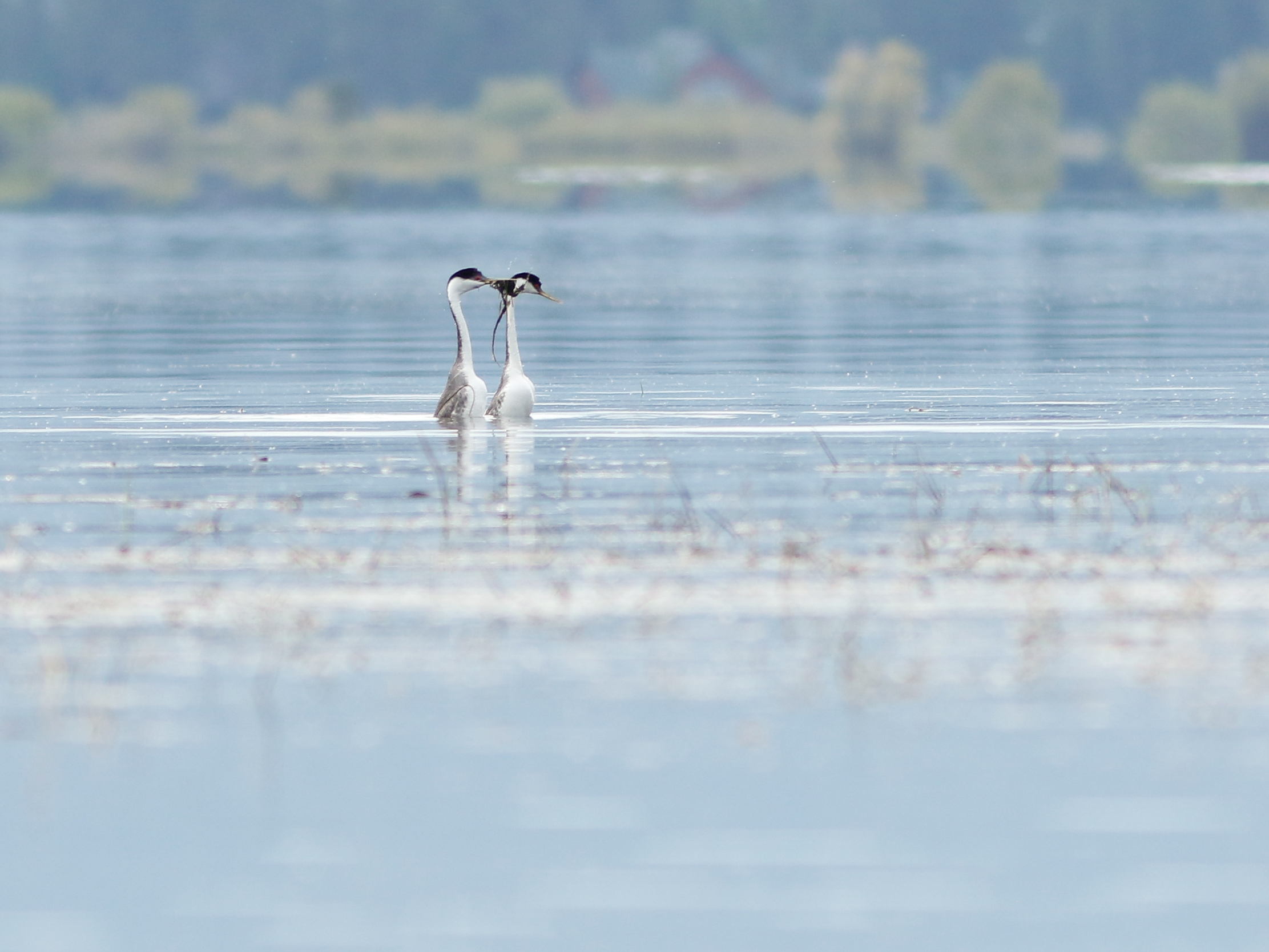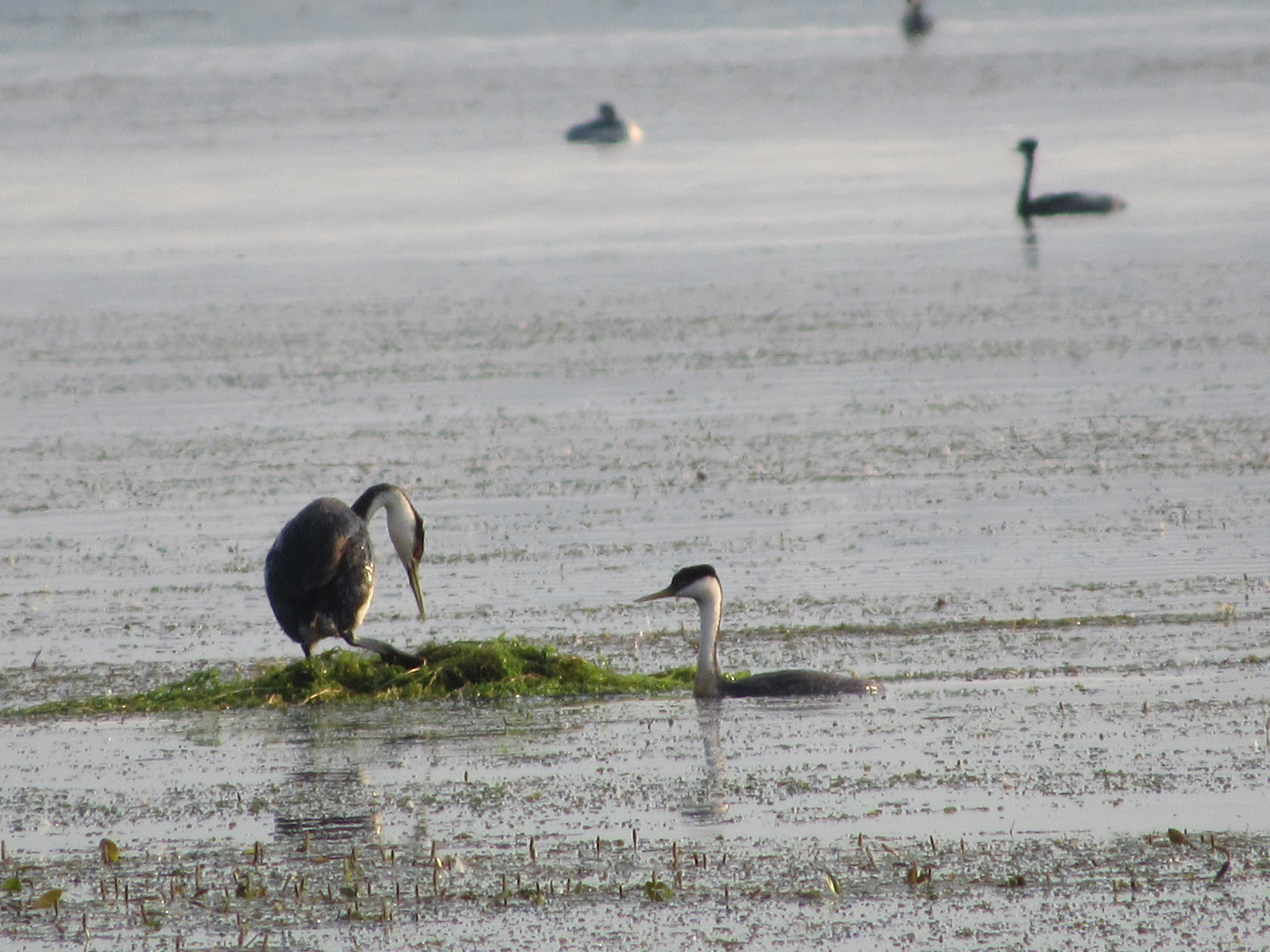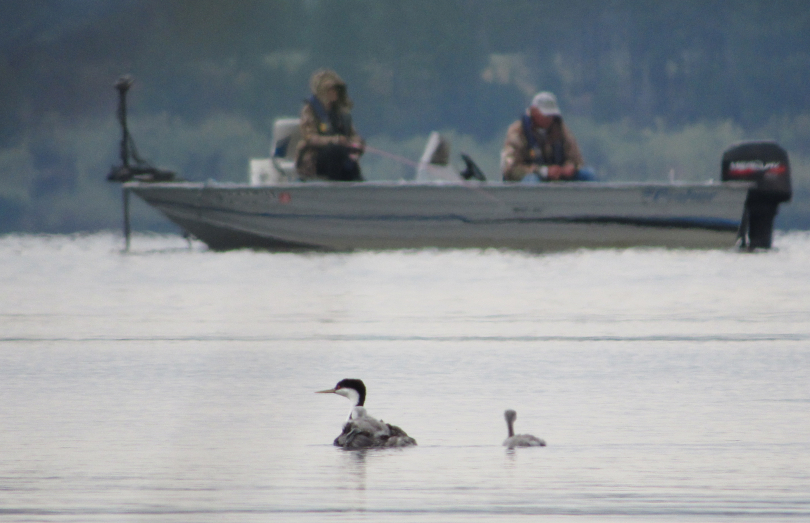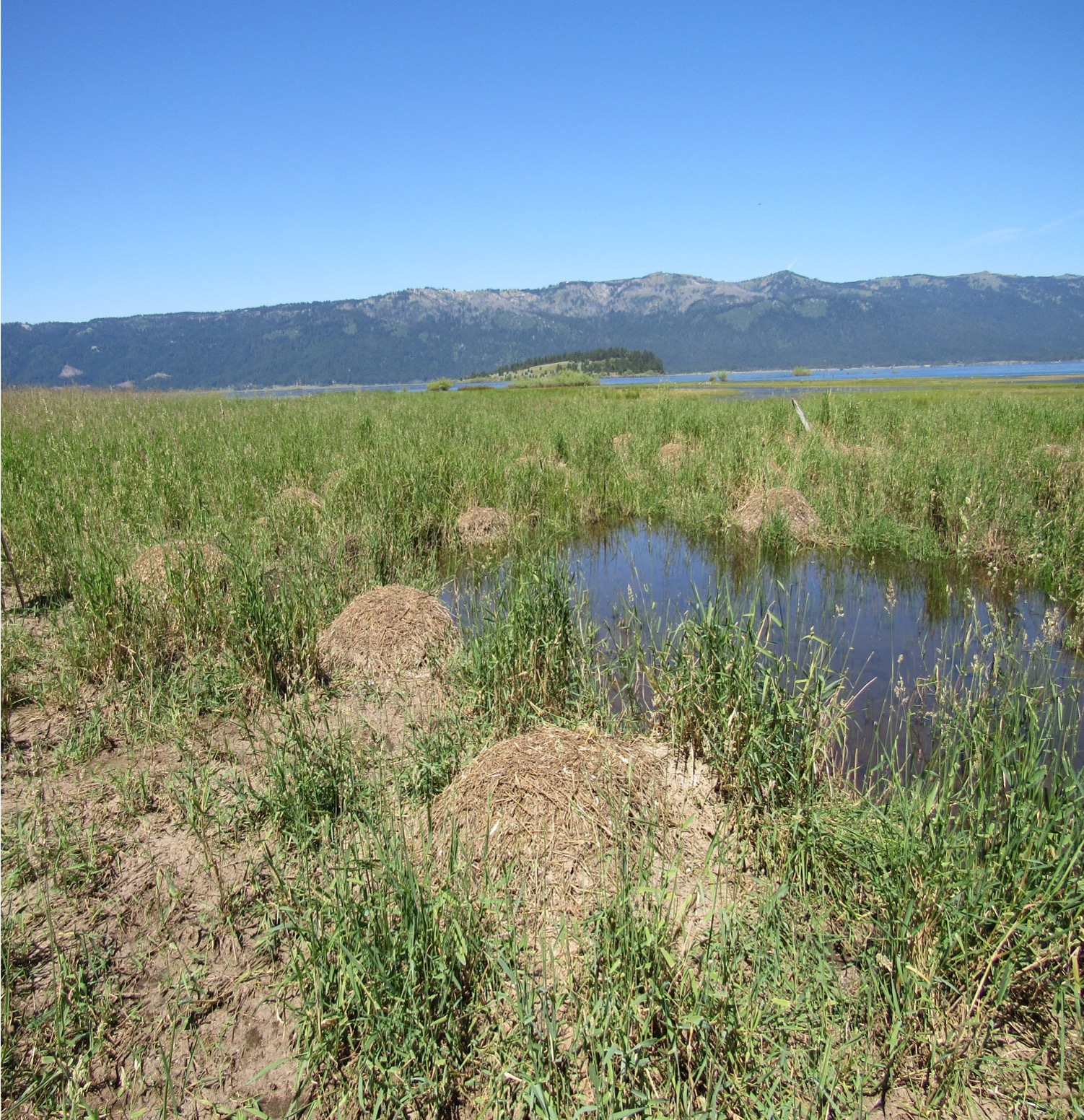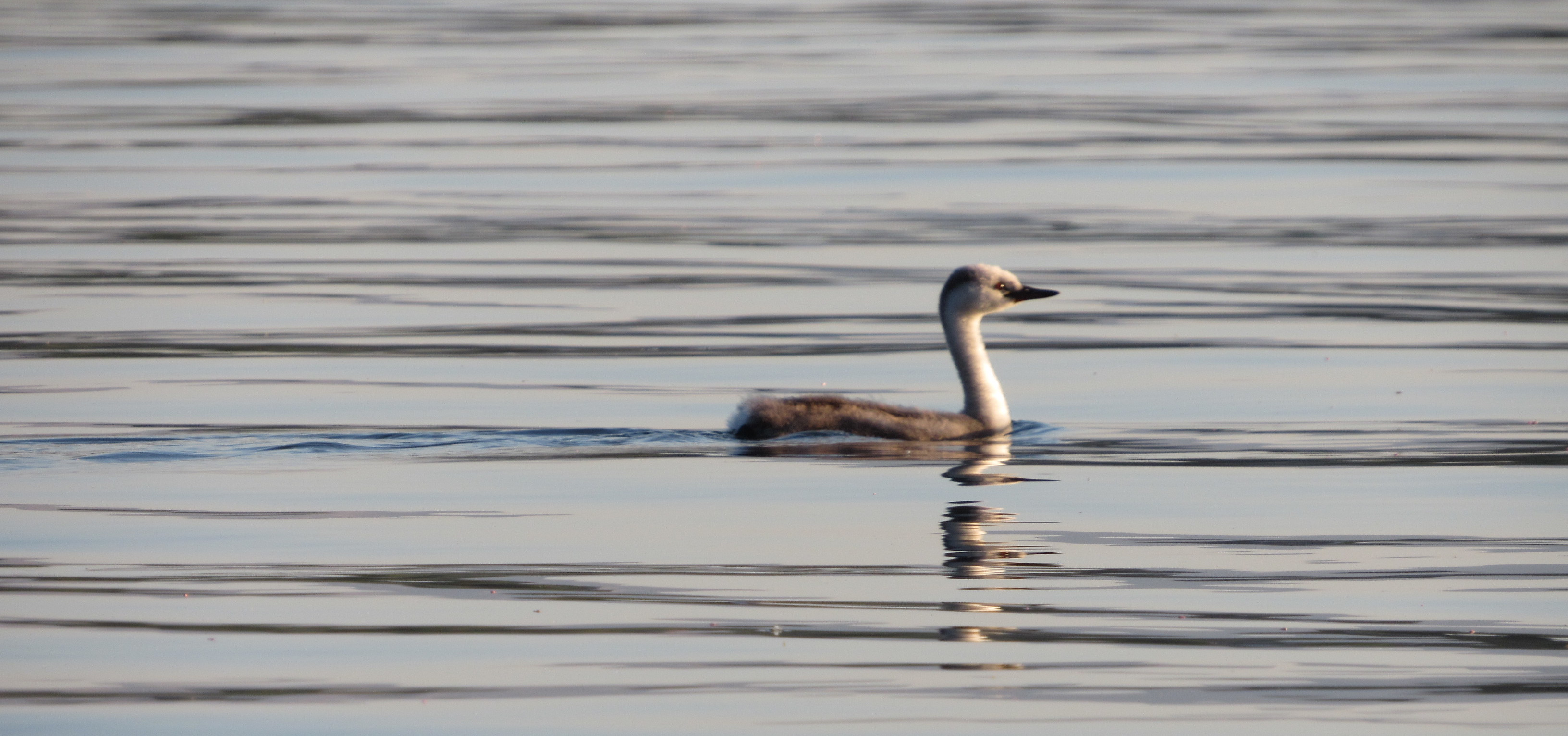Western and Clark’s Grebe Breeding Lakes of North America
A summary of Western and Clark’s Grebe breeding data at state, provincial, and regional scales in North America
Western Grebes (Aechmophorus occidentalis) and Clark’s Grebes (Aechmophorus clarkii) are two iconic waterbird species of North America most famous for their complex ritualistic courtship dances. These grebes breed on inland freshwater lakes and reservoirs of the western portion of the United States and the southern parts of Canada and winter along the western coast of North America. Western and Clark’s Grebes are piscivorous waterbirds, relying on fish for a majority of their diet. They construct platform nests from vegetation along edges of large freshwater lakes and typically nest in colonies that can exceed hundreds to thousands of pairs nesting in close proximity.
Mapping Western and Clark's Grebe Surveys
Despite their conspicuous and gregarious nature, little is known about Western and Clark’s Grebe life history and movements, including their migration, stopover sites, breeding dispersal between breeding colonies, longevity, age at first breeding, and limiting factors to survival.
This dearth of knowledge is partly due to a lack of dedicated grebe surveys and banding recoveries. We also have little information on movements and survival of these grebe species due to their intolerance and high mortality response to tracking devices. Western and Clark’s Grebes are rare, difficult to count, and are not well-represented in continental survey efforts like the North American Breeding Bird Survey (BBS) because breeding individuals often congregate in the open water distant from observation points. They may abandon nests if their colony is disturbed by humans or other encroachments, making research difficult.
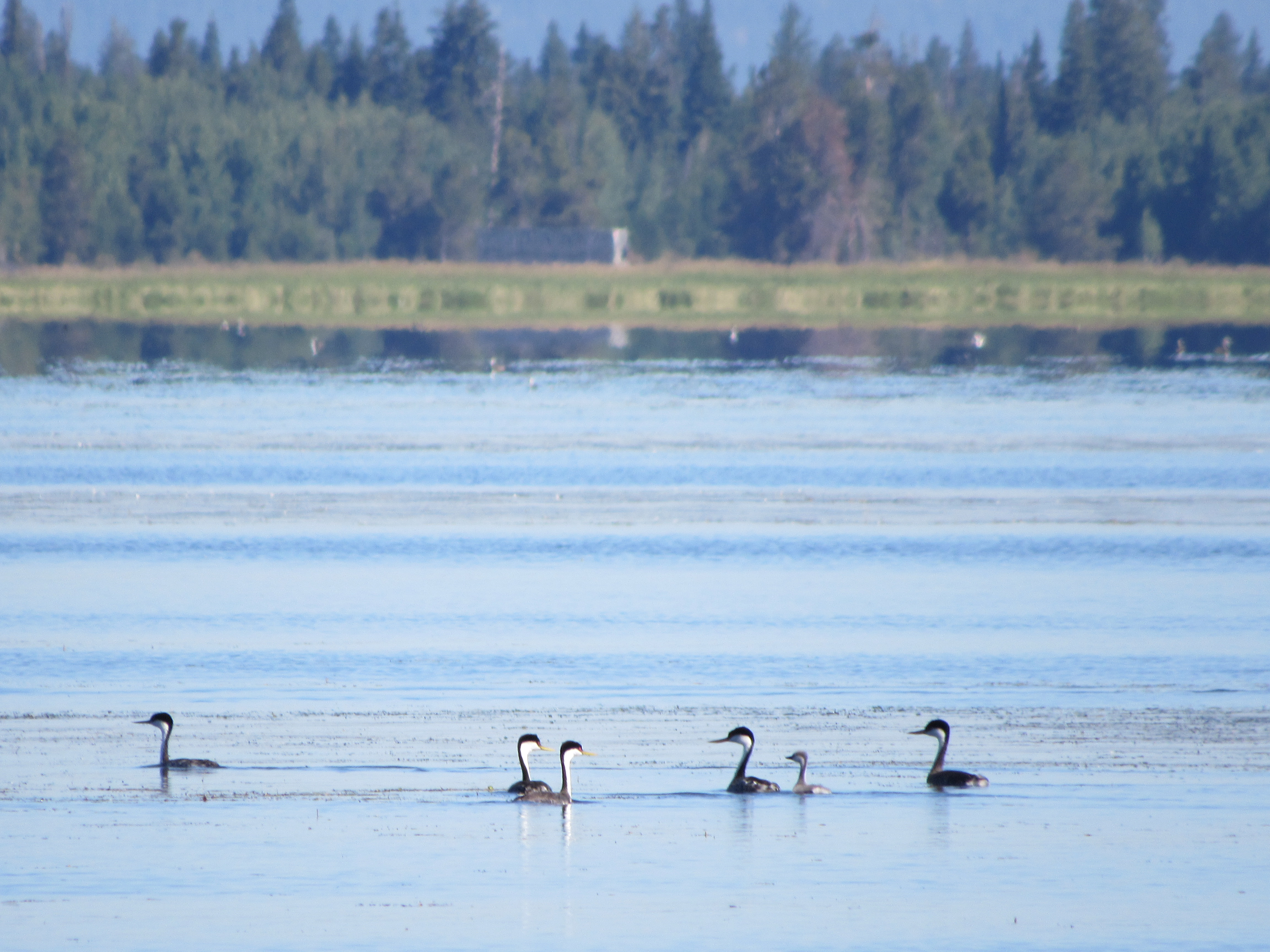
Due to these challenges, we know relatively little about grebe population trends or dynamics. To help resolve this, we compiled published and unpublished data summarizing the status of current and historical Western and Clark’s Grebe populations on breeding lakes across North America.
From these surveys, we summarized count numbers for grebe adults, nests, and chicks during the breeding season, including data on maximum counts, minimum counts, and the date of the most recent count. This summary reflects all known Western and Clark’s Grebe breeding lakes in North America to better document population status and regional variation in abundance.
We reviewed over 290 studies and found that the largest concentrations of adults (maximum count of >1000 adults) during the breeding season in any survey year were in 5% (36) of the 770 breeding lakes identified in this study. Most of the breeding lakes (73%) supported the smallest concentrations of adults (maximum count of less than 100). This online breeding lakes inventory is embedded with grebe population data, including information on lake water use, threats to grebes, and other pertinent lake data so that resource managers can make more informed management decisions.
Threats to Western and Clark's Grebes
Western and Clark’s Grebes face various threats at breeding lakes including egg predation, wind and wave impact on nests, changes in populations of forage fish, anthropogenic disturbances, rapid fluctuation of water levels at nesting colonies, and decrease in nesting habitat availability. As part of this breeding lake inventory, we also summarized the most common threats to these birds identified by researchers.
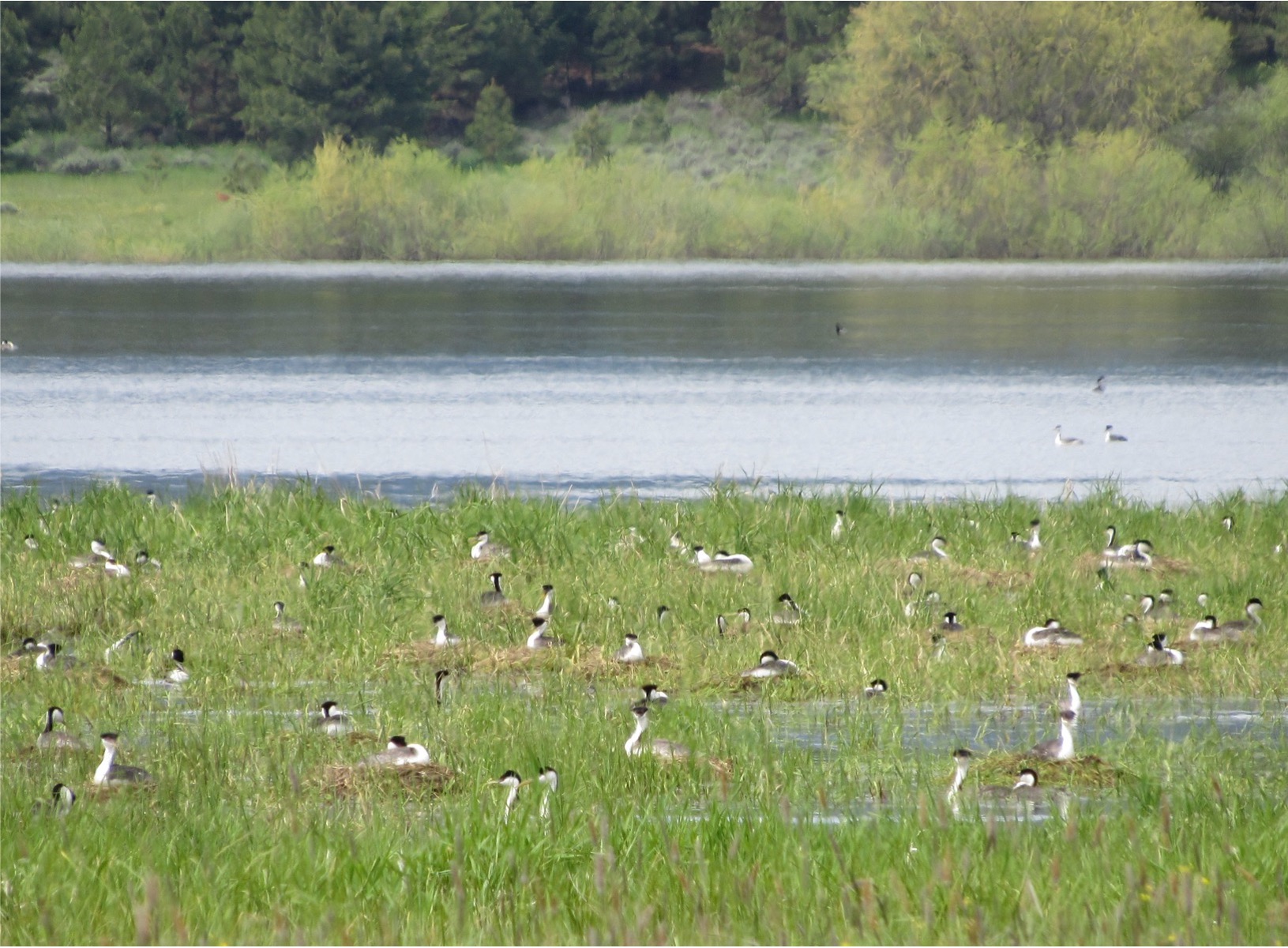
Why Study Western and Clark's Grebes?
Current information on Western and Clark’s Grebe population trends and reproductive success is essential to their conservation. Western and Clark’s Grebes were listed as Birds of Conservation Concern in 2021 by the U.S. Fish and Wildlife Service. The Birds of Conservation Concern list is intended to outline proactive conservation actions for government and non-government entities to protect bird taxa of conservation priority from Endangered Species Act (ESA) listing. Additionally, the U.S. North American Bird Conservation Initiative Committee (NABCI) included Western and Clark’s Grebes as 2 of the 90 On Alert species in the U.S. On Alert species had population declines >50% from 1970 to 2019 and are particularly vulnerable to extinction due to sharp population declines and threats to their continued survival.
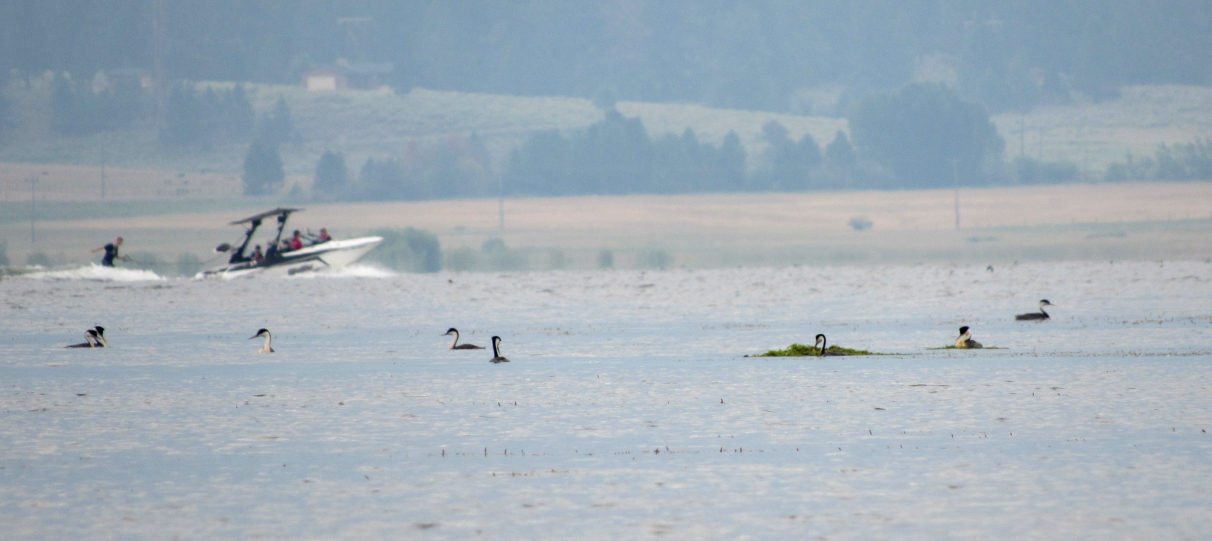
Shared Waters
Western and Clark’s Grebes depend on aquatic environments for nearly all stages of life including foraging, breeding, and raising their chicks, and they are sensitive to changes in water depth. Anthropogenic demand for remaining water resources is high, especially in escalating arid conditions of the west and intermountain west. Yet drought conditions are not the sole domain of the west in recent years. Above-average temperatures affected most of the United States from 2020 to 2022 and extreme to exceptional drought conditions impacted the largest stretch of the contiguous United States on record for two years in a row (2021 and 2022) ever since the United States Drought Monitor (USDM) started monitoring drought in 2000. Multiple years of drought conditions in the west strained water supplies and left many major reservoirs at or near their lowest levels on record in 2022. Above-normal precipitation and snowmelt from above-average snow pack made for a wet spring in 2023 and relieved some drought conditions in California and other regions. However, parts of the west still remain under moderate to severe drought and the Great Plains is under moderate to exceptional drought conditions as of summer 2023.
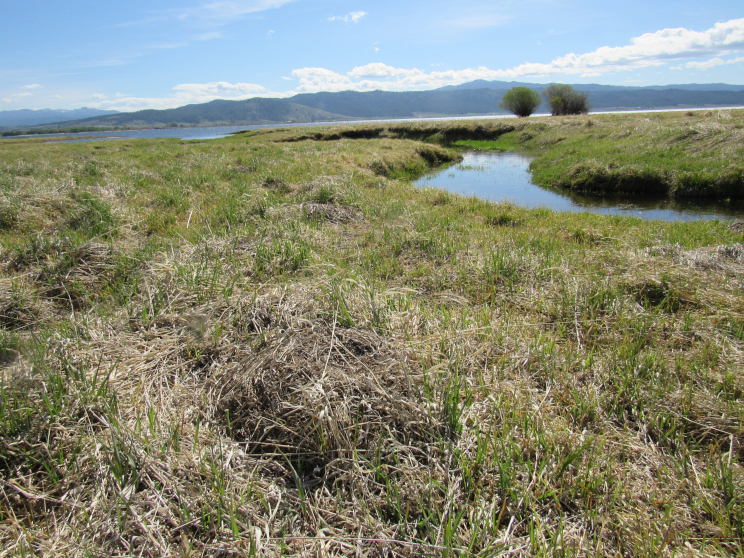
Conservation
We hope this online map will support the conservation of these iconic waterbirds on the brink of precipitous decline in an increasingly dynamic and unpredictable landscape.
All data sources are referenced and can be referred to for additional details. If you have any questions about this project or if you have Western and Clark’s Grebe data to share, please contact Anne Yen at ayen@uidaho.edu.
